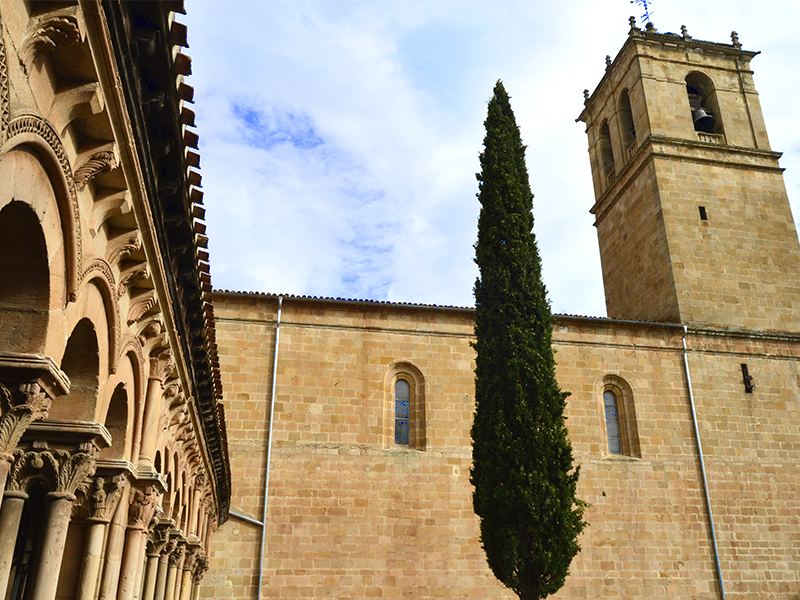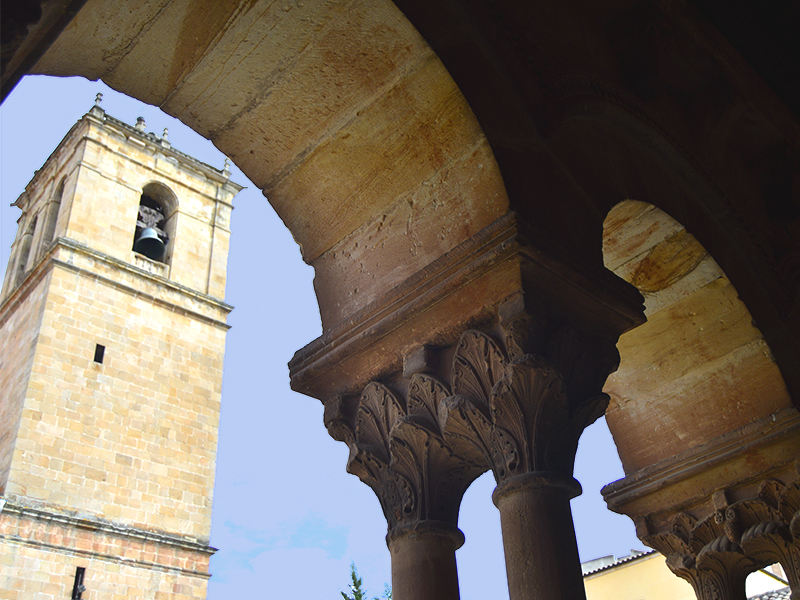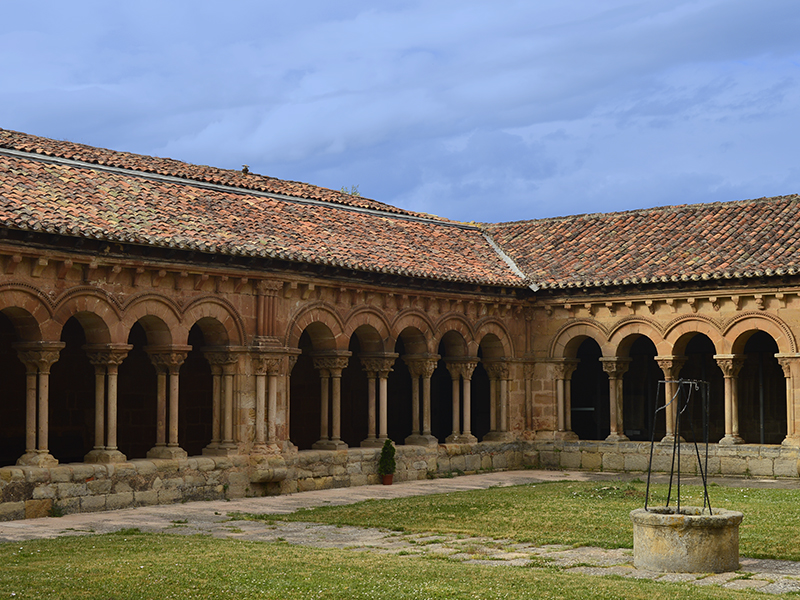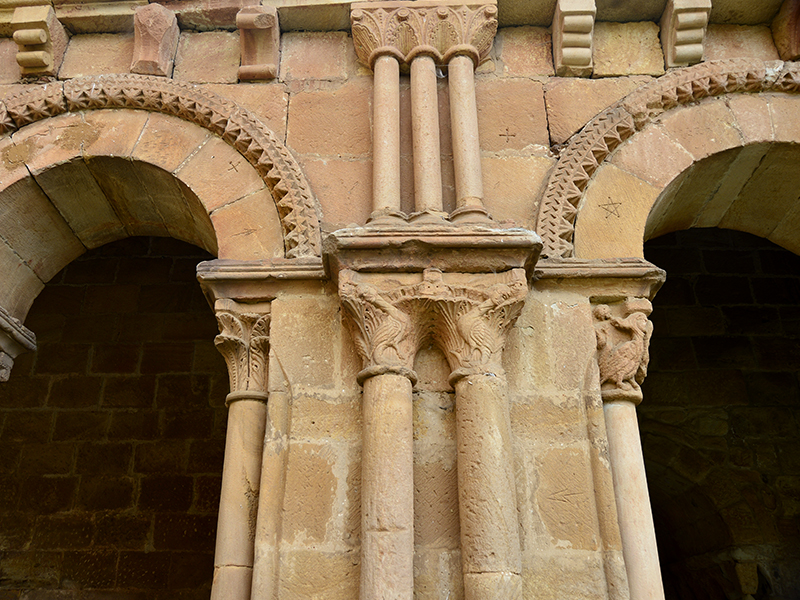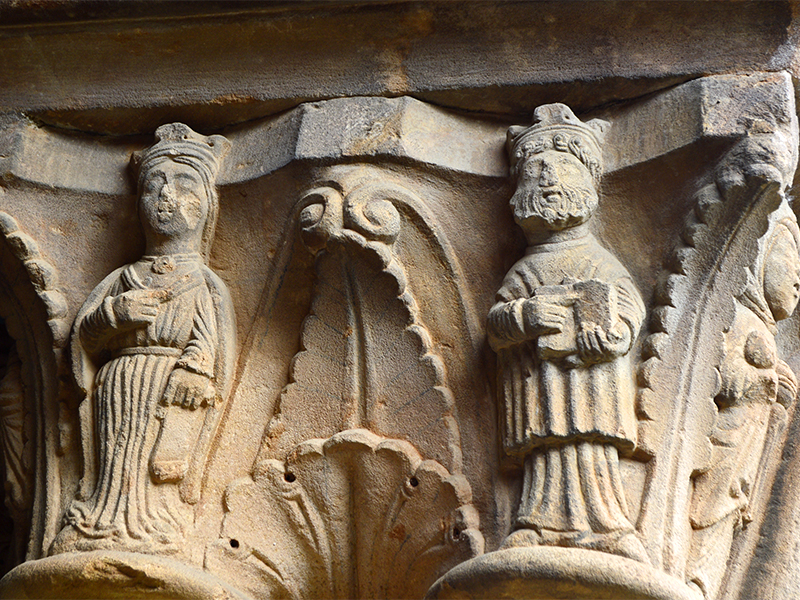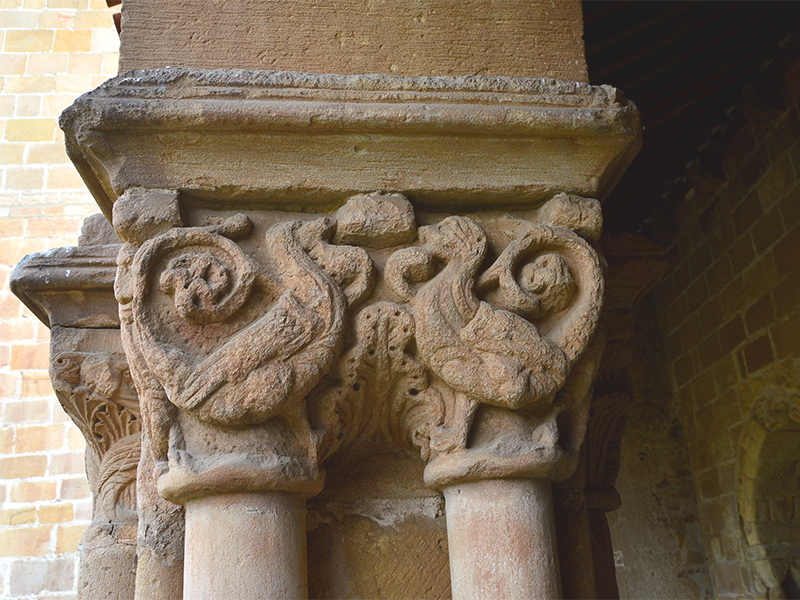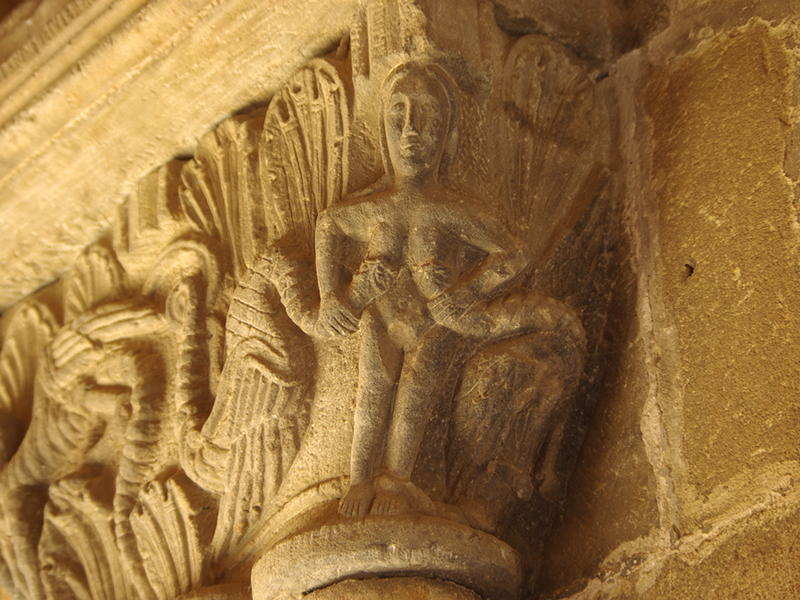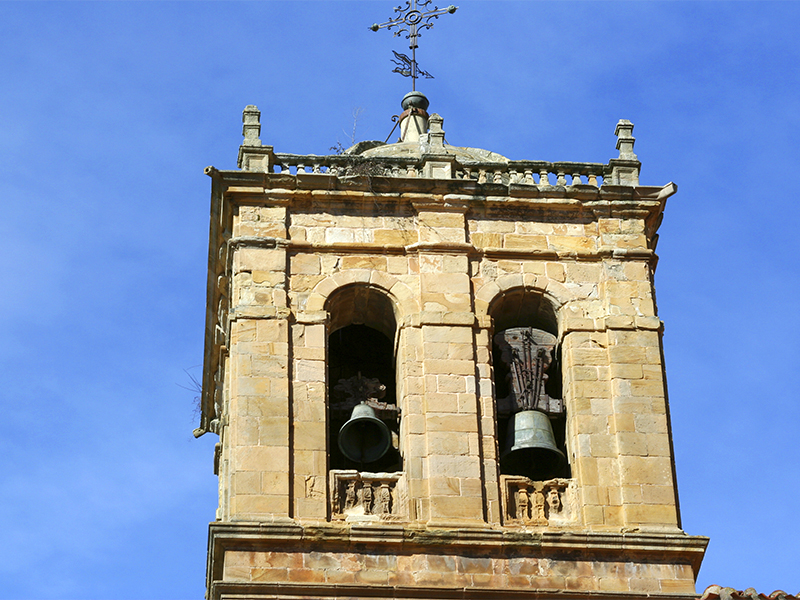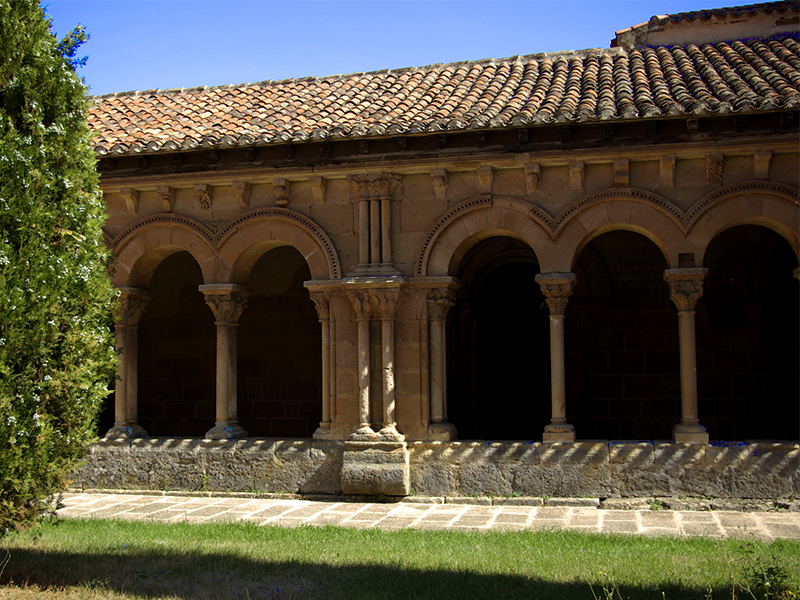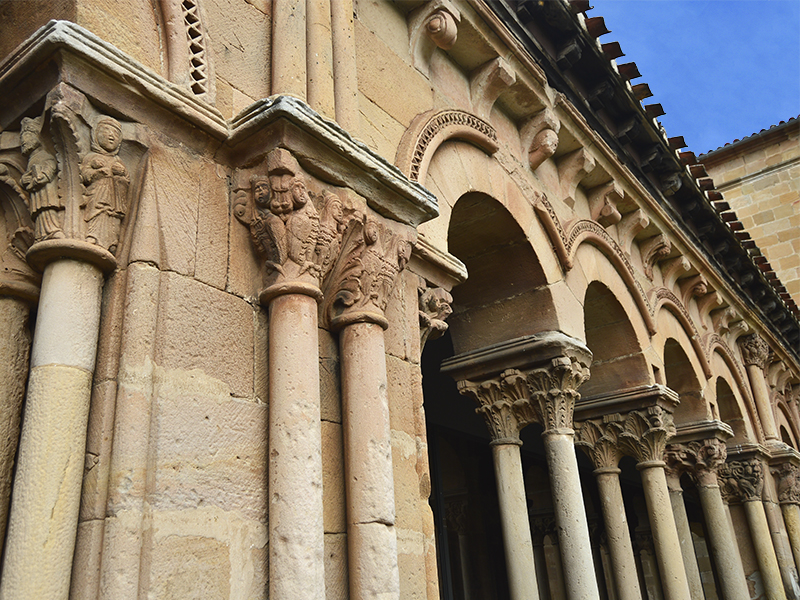CO-CATHEDRAL AND CLOISTER OF SAN PEDRO
PATH OF MEDITATION BETWEEN ROMANESQUE FIGURES
HISTORY
The early church could have been built in the years when Alfonso I the Battler, which united in marriage with Urraca of Castile, began the repopulation of Soria (1109-1119).
After the resettlement, the neighborhood quickly grew prompting the Bishop of Osma to raise the parish of San Pedro to the category of Collegiate. In the early sixteenth century, according to tradition, the council gave orders for an architect to take off a pillar and clear the view of the statue of the Virgin, which caused the tower and much of the roof to crumble.
Although asked relocate the temple, it began to be rebuilt immediately in Gothic style in the same place and modeled the Collegiate of Berlanga de Duero. As a result, Romanesque and Gothic coexist in the same building and are divided only by a door linking the Gothic temple with Romanesque cloister. He was promoted to Co-Cathedral in 1959, maintaining the ecclesial capital of the diocese in El Burgo de Osma.
In 1980 it was declared of Cultural Interest.
BUILDING
Outside, very sober, stands the south portal, Plateresque presided by the image of San Pedro with the keys of the church located in a niche of bulky shell.
The Holy Door, unlike the South one is much simpler and was the entrance to the Cathedral in the Medieval times, when the Main Square was the current St. Peter's Square, the center of town at the time. In the Tower, masonry and squared, built with stone from the ruined Church of San Miguel de Montenegro, it highlights the set of bells, one of the most spectacular and important cathedrals of Spain. There are seven existing bells of which five are prior to 1701 are worthy of being considered individually as Movable Item of Cultural Interest ; the value of their age must also add the beauty of its wooden manes.
The interior floor lounge has three naves sectioned into five parts covered with stared vaults over huge cylindrical pillars and polygonal head. It has numerous chapels: Mayor, San Nicolas, San Miguel, San Saturio, Holy Trinity, Entombment, Nuestra Señora del Azogue, Our Lady of Santa Catalina and among them is included the one dedicated to the patron San Saturio built on the old chapter and St. Nicholas, with an altarpiece from the former church of Santa Clara. It deserves special attention within the altarpieces of the rest of the temple the largest altarpiece by Francisco del Río from the 16th century, narrating episodes of the life of St. Peter.
Finally it should be noted that the Cathedral has hosted the exhibition of Las Edades del Hombre "Inner Landscape" in 2009 so previously underwent a comprehensive restoration process conditioning temple, cleaning the vaults and outside façades, besides the restoration of the main altarpiece and the altarpiece of San Miguel.
THE CLOISTER
Undoubtedly, the great jewel of the set is its cloister, declared a national monument in 1929.
You can access from the outside by a portal with rounded arch of the 17th century next to the tower, but you can also enter from inside the temple by another portal in the southeast corner. This architectural gem dates from the mid-twelfth century and is equipped with large dimensions (30 x 30 meters); It is configured as a Romanesque yard with huge influences from Silos and preserves three of its galleries (the one of the south side was demolished to build the present temple) composed with arches on double columns of great originality resting on adjoining podium. Their sandstone capitals form a universe of fantastic animals, plant motifs and biblical allegories and solemn scenes.
It is worth mentioning the door of the old refectory and the entrance to the Chapter Hall, with lobed pointed arch. In the cloister some traces of paintings of the late Gothic, and two peculiarities to highlight, are the great diversity of quarry marks that can be seen on the walls and a legend related to an eclipse of the moon that took plce on on 3rd June 1239.
| Open during religious mass schedule:
Monday to Saturday: 19.00 h. |
|
| 2 € Romanesque cloister | |
| 975 225 891 | |








